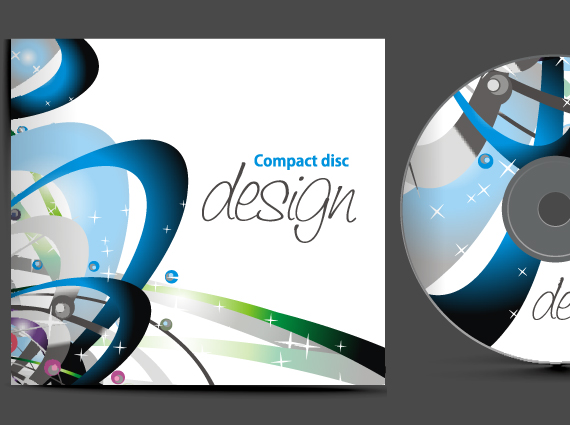Small businesses are part of an overwhelming majority of all combined businesses in the United States. In fact, there are nearly 30 million small businesses that make up well over 99% of all businesses in the U.S.
Becoming an entrepreneur and designing a flexible career path doesn’t require a college degree, decades of management experience, or tons of money in the bank. Having a plan, following necessary steps, and maintaining the persistence to see it through are the only basic prerequisites needed to set you on a path for success.

Remember to set goals for yourself, your team, and your business as you go, and follow these seven steps to help get your business up and running smoothly.
1. Successful Business Start-Ups Have a Vision and Plan
A business plan is a clear snapshot of your business. It should be designed to clearly define the start, growth, and objective of your business, and the products and services one intends to offer and sell. In solidifying what’s ahead, a plan should outline its goals and milestones, primary operating procedures, and its greatest competition.
A well designed business plan should include the following sections:
1. Title Page
2. Summary
3. Business Description
4. Marketing Plan and Strategies
5. Competition Analytics
6. Development Plan
7. Operation and Management
8. Business Projections
9. Appendix
NOTE: If you seek funding from a loan or venture capitalist, nothing will be achieved without a business plan. Make sure your plan includes a marketing campaign, as sales is the lifeline of every business, and a business can not last without new buyers and customers.
2. Starting a Business Based on Market, Product, and Customer Research
The majority of new entrepreneurs will tend to neglect market research, but such due diligence is critical and helps you in the following ways:
Identify Your Target Market - Identify and research the people you are trying to reach, their needs, mentality, and current options in the market.
Test Your Idea - Before going to the market with your idea or product, test its viability and feedback from potential customers. This process will help you to identify ways to better your approach by revealing opportunities to better your product.
Understand the Needs and History of Your Target Market - Knowing all previous and current solutions will help to further define your options for bettering your product, and the approach you take in getting it to the market.
Research the Competition AND Market Partners - Start with online searches. Observe how their websites are structured, how they present their product, and the mechanisms they use to illustrate the benefit of becoming a customer.
NOTE: If no one else is doing “this” in the market, find out why. There may be a strong reason or validation that your product is in fact unique.
When researching or holding a focus group, ask about the factors that lead to the purchase (or not) of the product, about areas or opportunities for improvement, and (if purchased) about product satisfaction. Be willing to accept negative (or harsh) feedback as well as the good, both forms of information serve the same purpose: to better your product and improve chances for long-term success and profitability.
Research their advertising and marketing approaches. Learn from their mistakes and their success. Every pitfall you can identify and avoid will help to get your product to market faster and more efficiently.
Diversify Your Market Research Approach - Don’t allow yourself to get caught up in only one form of research, rather employ various methods such as: online, face-to-face, phone, surveys or questionnaires. The content value of your research gains value when diverse methods of acquiring such information are used.
3. Choosing and Registering Your Business Name
Before anything else, you must understand that your business name represents your business, your product, and you. It has the power to attract or repel potential customers and is as important as the product it represents.
Keyword brainstorming will help you to come up with a list of relevant potential names. Remember that this brand name will play a role in every aspect of your business and branding efforts. When developing a short list of possible names, identify potential implications (positive and negative), and associative words that represent your product.
When you settle on a business name, research it to make sure it is not in use or trademarked. If the name is okay to use, register it with your local and/or state Government (Secretary of State or County Clerk). Also, secure it as a domain name via GoDaddy.com or other Domain name registrar. If the exact name is not available, use slight variances until you find one that is relevant and available.
4. Create Your Business Logo and Marketing Material
Establishing your company’s identity (branding) involves a combination of Business and creative efforts. To help potential customers find, identify, and remember. You should have a logo that makes sense. That logo should then be visible in every aspect of your company’s marketing and promotion campaign.
Seeing its importance, the logo should embody your companies core character, and display these values using relevant colors, designs, and font styles.
Printed marketing materials include business cards, letterheads, envelopes, notepads, t-shirts, stickers, etc. Generally the more visible you become, the more the public will begin to know, like, and trust your company.

Marketing is about effectively communicating the benefit of your company, and it starts with your logo and the design of your marketing materials. If you need a savvy graphic designer or printed marketing materials for your business, visit clashgraphics.com.
5. Get Business Tax ID, Licenses, and Permits
In order to avoid intellectual theft, lawsuits, or being misled in a partnership, take steps to secure all of the legal aspects of your business early on.
Some of the requirements to ensure your company is properly structured are:
- Business Name
- Business Structure (corporation, partnership, LLC, etc.)
- Federal Tax ID or Employer Identification Number (EIN)
- State Tax ID
- Municipal Tax ID
- Register Your Business
- Commercial/Business Permits
- Commercial/Business License
- Business Bank Account
- Insurance
Being in good standing with your local government and tax authority is a fundamental prerequisite to your business success. It is prudent to consult a lawyer, tax specialist or accountant to ensure you are operating in accordance with all laws and fully protected. If you have employees, be aware that the following payroll requirements may also apply:
- OSHA Requirements
- Unemployment Insurance
- Workers’ Compensation
- Federal Tax
- State Tax
- Local Tax
- Payroll Tax (FICA, Social Security, Federal and State Unemployment Tax)
6. Choose and Establish a Business Location
Your business location should fit your current business needs and be flexible enough to support growth. Take the following into consideration:
Business Location - Does the location geographically suit the needs of your business and the business you will be doing? Is it convenient and easily accessible to your ideal customers?
Buy or Lease? - Determine the affordability of the location and whether or not this will be a short, mid, or long term location. This will be a substantial commitment, so consult a real estate professional to ensure that you understand all terms of the lease or purchase agreement.
Home Office or Storefront - In many business startups, the storefront is the home office. As your business grows, will you plan to move the “home office” to another location? Do you have the capital to maintain two separate locations from the start?
Foot Traffic - For a storefront location, ease of access is fundamental. Is there sufficient foot traffic to bring walk-ins and is the location easy to find?
Parking - If your customers have trouble finding a parking spot or simply don’t know where to park, they will go elsewhere. Again, ease of access plays a tremendous role in the success of your company.
Competition - After having invested in market research and done the footwork to know your customer’s demographics, the choice location may be near your competition.
Lastly, consider the majority of customers will navigate and find your location using their smart phone devices. Check that Google and Apple Maps recognizes and provides clear directions to your new potential place of business
7. Plan Your Finances and Fund Your Business
Part of being a small business owner is having the upfront capital for the initial investments and ongoing expenses until your business begins to turn a profit.
Having a clear concept of the difference between one-time costs and ongoing expenses will allow you to appropriately plan and invest in both. The following are the potential one-time startup costs you may have:
- Market Research
- Leasing Expenses
- Licenses and Permits
- Legal Fees
- Office Equipment
- Manufacturing Equipment
- Trademarking
- Branding
A few of the ongoing expenses you will have to cover may be:
- Salary / Payroll
- Rent
- Advertising / Marketing Budget
- Supplies
- Utilities
When you self-fund your business, you are in control of its path, equity, and future. Seek additional funding through a bank loan, credit union, or line of credit.
Another capital strategy is to negotiate advance payments from strategic partners, or offer a discount to clients willing to prepay their services. If your product is in high demand, those that have a need may be willing to fund you as well.
Kick starter or other crowd funding platforms are popular and effective methods to raise capital for your new venture.
While there are infinite ways to fund a new business, beware of unscrupulous contracts and agreements that may jeopardize the present or future well-being of your business.
Starting a Business Through Informed Decisions
When creating, developing, realizing the information and structure for a new business, every available venue for research and knowledge should be exhausted. Making informed decisions about the structure, functionality, size, and location of your business from the start will give you a better chance at obtaining steady growth and eventual success.
A potential framework for your new startups’ success is - having surpassed tangible milestones while setting new goals to reach.
Clash Graphics Print Shop Atlanta Flyer Printing
2233 Peachtree Rd NE Ste 202 Atlanta, GA 30309
(678) 235-3464
To view the original version on Clash Graphics, visit: www.clashgraphics.com/printing-tips/how-to-start-business-7-steps/


